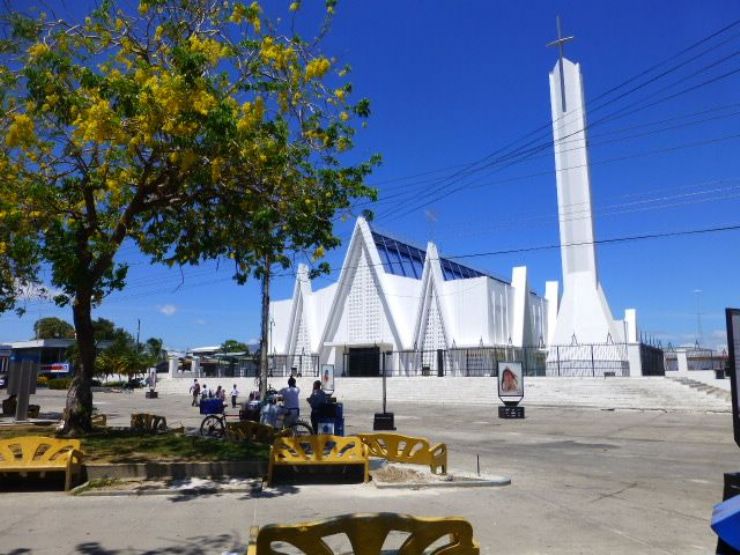
Liberia's Church
As the capital of the province of Guanacaste, Liberia boasts an interesting history and was home to many important events. While Liberia is a large part of Costa Rican culture today, the city wasn't technically a part of Costa Rica many years ago - it was a part of Nicaragua until 1812. When you're traveling around Liberia, you may hear locals refer to it as "la ciudad blanca" or the white city, due to Liberia's plethora of whitewashed colonial houses and the city roads that were once covered in white gravel. I wish I had some frog-sized sunglasses at times! While Liberia has become more modern, it's still considered a colonial town.
As you may imagine, Liberia is a fairly quiet town, but as word has spread about the beautiful beaches in the area, it has become a well-traveled locale. When you're planning what to do in Costa Rica, don't expect high-end dining and boutique shopping in Liberia you won't find that here. It's still a fairly new city in terms of tourism, so it won't be as bustling as cities like San Jose. Rather, you'll be able to lay your hair down and relax a bit more, that's why you're in Costa Rica anyways, right?
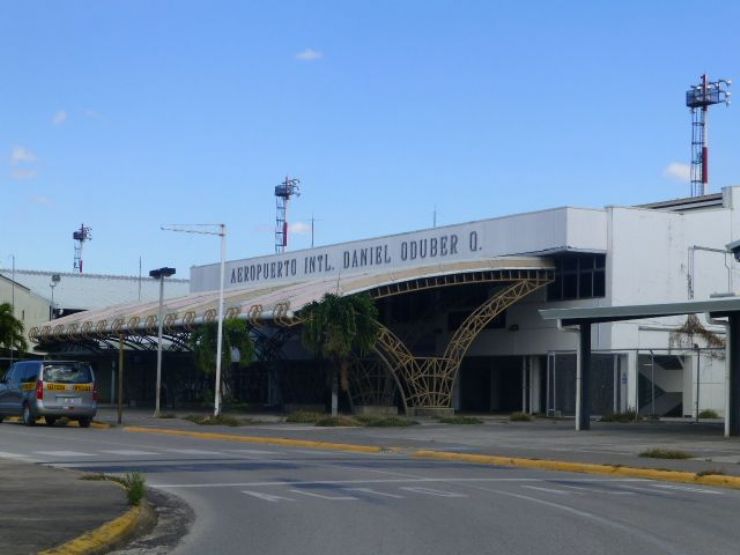
Daniel Oduber Intl. Airport main terminal, Liberia
7 Days / 6 Nights
Starting at $779 per person
Ranching and Cattle Farming
I know what you may be thinking: What's the fun in learning about cattle-raising? The cowboy culture in Liberia isn't just a fashion statement - it's a way of life. Liberia plays a vital role in the entire cattle raising culture of
Costa Rica, with many goods passing through here being transported locally and internationally. Want to pick up some authentic cowboy boots? You can find some here!
The Sabaneros Museum (Museo de Sabaneros) is the best place in town to learn about the past of cattle raising and ranching in Liberia. This museum is fairly small, but it houses a good sized collection of photos and tools that document the transformation of cattle raising and ranching in a post-colonial Costa Rica.
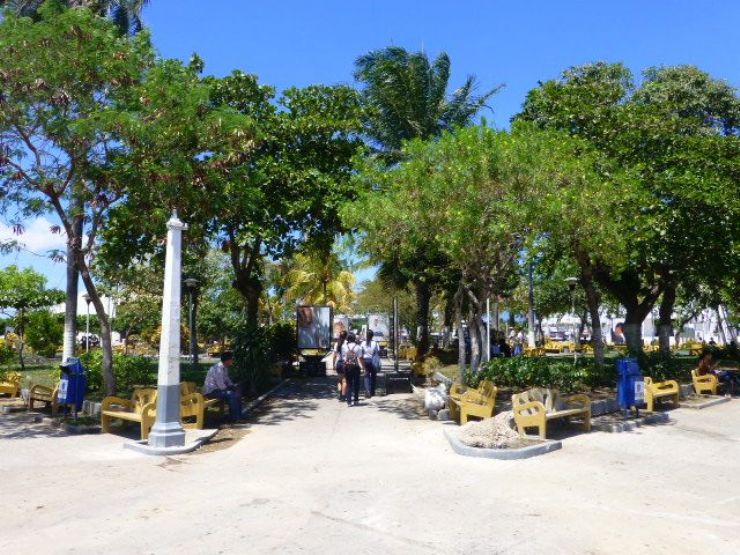
Central Park in Liberia, Guanacaste
The site of an epic battle
Prefer to experience history where it took place? You're in luck! The
Santa Rosa National Park was established because it was the site of a battle on March 20, 1856 where troops of filibusters who wanted to take over and enslave Costa Rica retreated after an attack by the Tico troops. Although this battle only lasted about 15 minutes, it has played a major role in Liberia. The results of this battle led to many positives, including the freedom of Costa Ricans. Also, the park was protected because of its historical value, which allowed the area's wildlife to prosper.
Travelers can visit an old hacienda home on the Santa Rosa park grounds, which is where the filibusters took shelter during the short battle. Here you'll find a collection of guns and artifacts that were used during the battle, as well as photographs of leaders and other historically important events and people. There are also a few small tanks that were abandoned during other battles that took place on the grounds in 1919 and 1955.
The Santa Rosa National Park is not only a historical locale, but it is one of the most remote protected areas in Costa Rica. If you're coming to Liberia it's a must see. I know my sister Elena, the history buff, says this is her very favorite park! It's perfect for any frog with a penchant for patriotism! The combination of flora and fauna with its history serves a wide variety of travelers, and there's surely something everyone can enjoy.
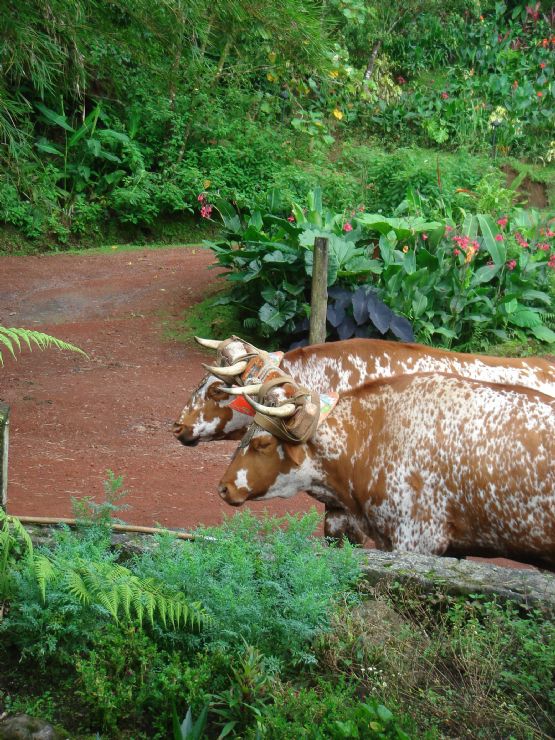
Cattle farming in Liberia, Guanacaste
Find a rodeo
You want to know my favorite part about Liberia? Its modern-day beauty! Locals celebrate Guanacaste Day on July 25th, which marks the day that the city was freed from Nicaragua. This is one of the best days to really learn about the cowboy culture. There's a rural fair, bullfighting and an annual horse parade! Viva la Fiesta!
Want to really dive into the cowboy culture? Attend a rodeo! You can watch as brave riders hop on massive (and agitated) bulls, and inevitably fall off and scramble for safety. This is a favorite pastime of many in Guanacaste, and you'll see people of all ages cheering the cowboys on. It's infectious!
Traveler tips
Although you will find other travelers here, there currently aren't many places to stay. Instead of towering hotels, the streets are lined with homes. Lodging options are largely no frills, yet this also means they are relatively inexpensive. In the future, it's anticipated that more hotels will be built, and the city's downtown center will be renovated and transformed into a more modern area.
Weather in Costa Rica plays a major role in how crowded towns are, so if you'd prefer to come here when it is quieter you may want to avoid the dry season. If you're coming from the
San Jose Costa Rica airport, it's about a 4.5 hour drive along the Inter-American Highway. Once you get to Liberia you'll notice the abundance of bus terminals, so you won't have any issues getting around town.
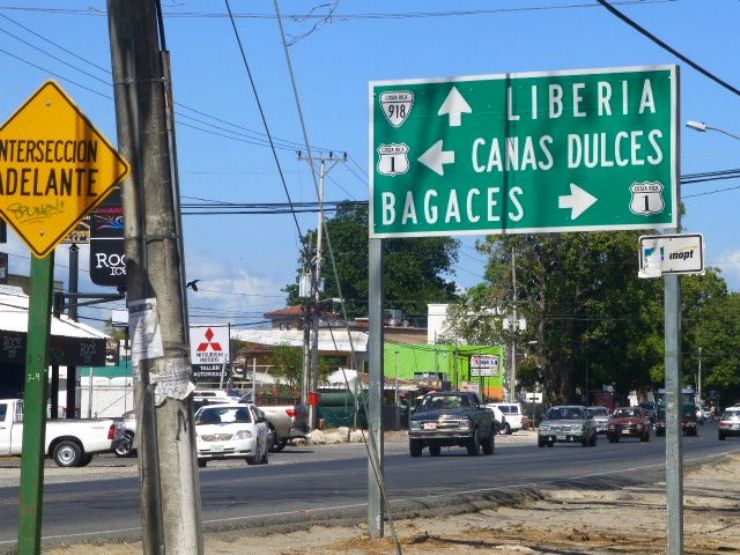
Sign to Liberia on the highway

